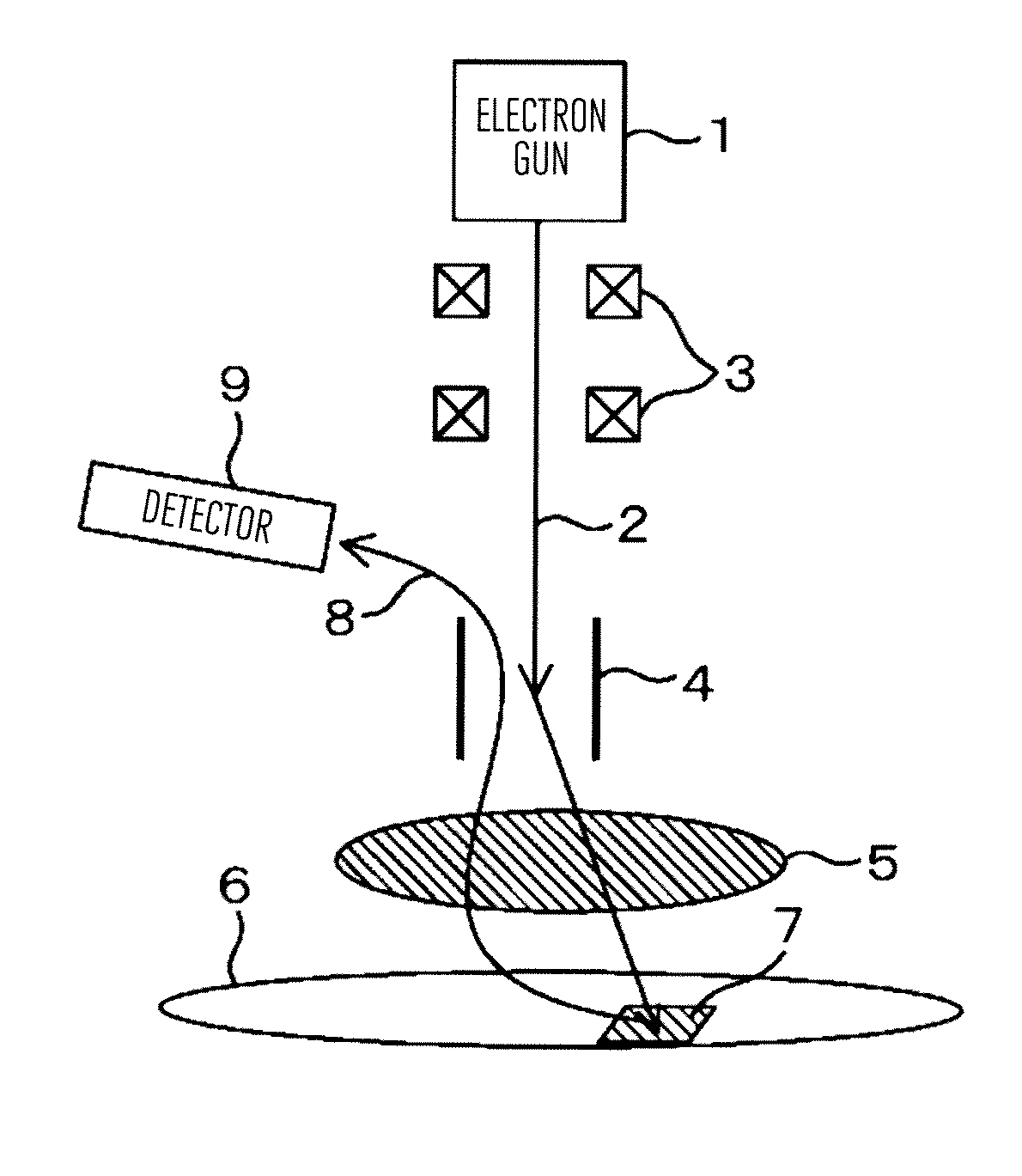Scanning electron microscope
a scanning electron microscope and electron microscope technology, applied in the field of scanning electron microscope, can solve problems such as difficulty in observing the bottom of the hol
- Summary
- Abstract
- Description
- Claims
- Application Information
AI Technical Summary
Benefits of technology
Problems solved by technology
Method used
Image
Examples
embodiment 1
[0081]In order to attach the charge to the sample uniformly, scanning is made so that the charge density per unit area of the inside area within the scanned area of the electron beam is lower than that of the outside area within the scanned area. As an example of such a scanning method, there is a scanning method as illustrated in FIGS. 4A, 4B and 4C.
[0082]When the primary beam is scanned on the sample so that a square is drawn on the sample as shown in FIG. 4A, an irradiation area in the form of a square frame can be formed. In the embodiment, an example in which such a scanning method is applied to preliminary scanning of the sample is described. FIG. 4A illustrates the scanning order that scanning is made from the outside to the inside of the scanned area in order as shown by (1) to (7), although scanning may be made from the inside to the outside of the scanned area in order. Further, the faster the scanning speed is, the less the number of irradiation electrons (hereinafter ref...
embodiment 2
[0088]In the pre-dose based on the scanning method illustrated in the embodiment 1, when the area of the center part A of FIG. 5A is reduced to zero, a square irradiation area can be formed as shown in FIG. 6A. In the embodiment, scanning is continued from the outside to the inside and the scanning signal is controlled so that the scanning speed is made faster as the center part A is approached. In this case, since the charge amount per unit area is gradually reduced from the outside to the inside, the charge distribution in which the charge density in the center part A is low and the charge density in the surrounding part B is high can be formed as shown in FIG. 6B. As a result, when the electric charge accumulated in the sample by the time observation is started after pre-dose does not spread excessively, substantially uniform potential distribution can be formed in the center part A and the deviation in the field of view upon observation can be prevented as shown in FIG. 3D.
embodiment 3
[0089]As a combination of the scanning methods of FIGS. 5A and 6A, the pre-dose method in which the scanning speed is made faster as the center part A of FIG. 5A is approached and inversely the scanning speed is made slower as the outer part C is approached is also applicable. In this case, it is preferable that an adjustment apparatus which can adjust the sizes of areas A and B freely is provided so that the sizes can be adjusted in accordance with a kind of the sample or optical conditions of the electron microscope. In this method, the charge density in the center part A is zero and the density in the surrounding part B is slowly increased from the area A to the area C, so that the potential distribution can be uniformed. As a result, the horizontal shift of the primary beam in observation can be prevented and deviation in the field of view in observation can be prevented.
PUM
 Login to View More
Login to View More Abstract
Description
Claims
Application Information
 Login to View More
Login to View More - R&D
- Intellectual Property
- Life Sciences
- Materials
- Tech Scout
- Unparalleled Data Quality
- Higher Quality Content
- 60% Fewer Hallucinations
Browse by: Latest US Patents, China's latest patents, Technical Efficacy Thesaurus, Application Domain, Technology Topic, Popular Technical Reports.
© 2025 PatSnap. All rights reserved.Legal|Privacy policy|Modern Slavery Act Transparency Statement|Sitemap|About US| Contact US: help@patsnap.com



